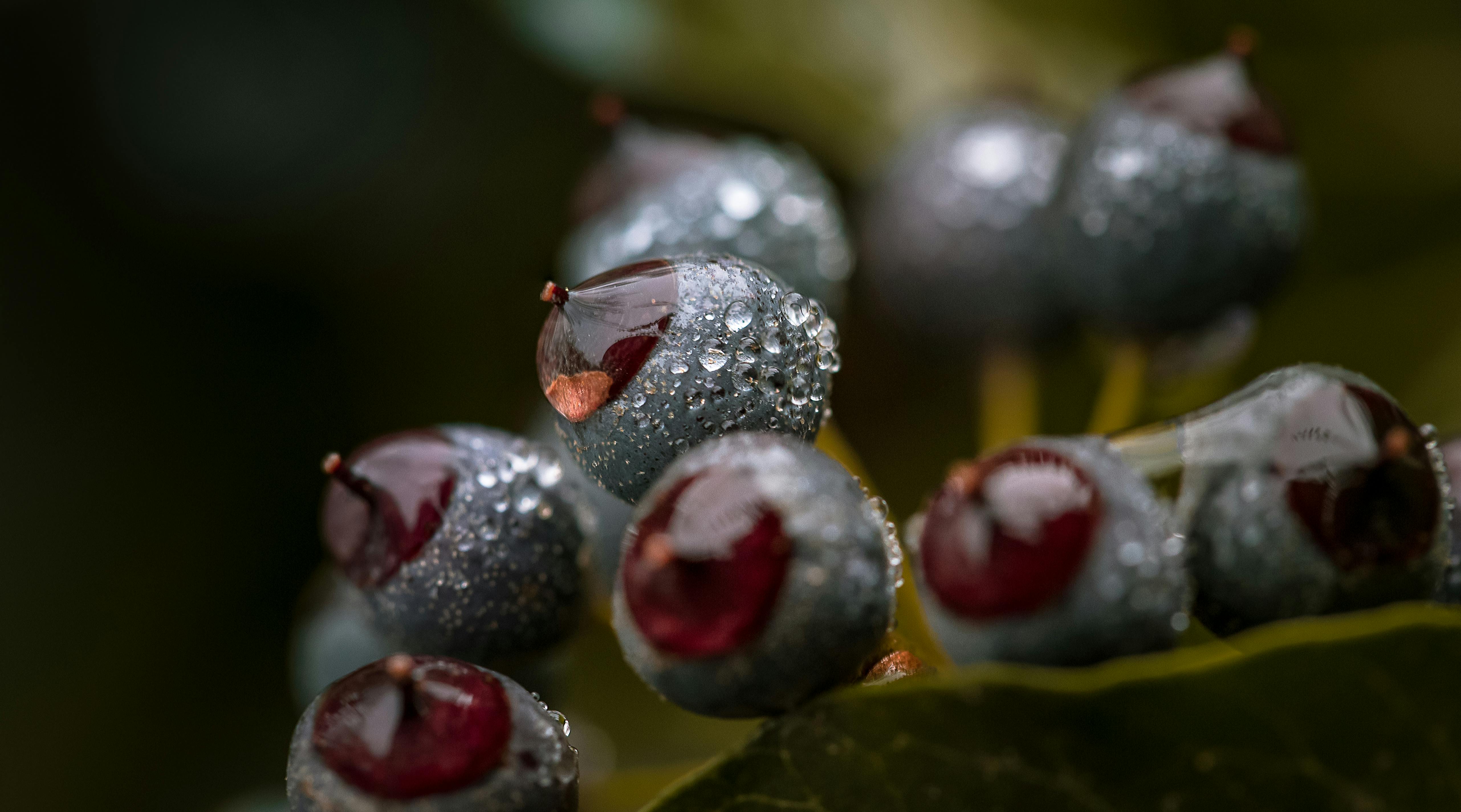Blueberry plants are a great addition to any garden. They are colorful, provide delicious fruit, and can thrive in most climates. One of the most important things for blueberry plants is water. Without enough water, they will not produce the best fruit or look their best. So how much water do blueberry plants need? In this article, we will discuss the optimal amount of water for blueberry plants, and how to ensure that your blueberry plants get the right amount of water.Blueberry plants need 1-2 inches of water per week. They prefer regular, deep watering, and it is best to water the soil directly rather than the foliage. If possible, water the plants in the morning so they have plenty of time to dry throughout the day. During periods of extreme heat or dryness, you may need to increase your watering frequency.
Factors Affecting Water Needs of Blueberry Plants
Water is essential for the growth and development of blueberry plants. The amount and frequency of water required for blueberry plants will depend on various factors such as climate, soil type, and plant age.
The climate in which the blueberry plants are grown in can have a major impact on the water needs of the plants. Generally, warmer climates require more frequent watering than cooler climates due to increased evapotranspiration rates. In hot and dry climates, water is often lost through evaporation from the soil surface, thus increasing overall water needs.
Soil type is also an important factor in determining the water needs of blueberry plants. Sandy soils allow for better aeration and drainage but tend to dry out more quickly than clay-type soils. As a result, sandy soils require more frequent watering than clay-type soils.
The age of the plant also plays a role in determining its water needs. As blueberry plants grow older, they become more adapted to their environment and require less frequent watering compared to younger plants which are still establishing their root system.
By understanding these factors that affect the water needs of blueberry plants, growers can develop effective irrigation strategies that ensure adequate moisture levels for optimal growth and yields.
Soil Requirements for Blueberry Plants
Blueberry plants require an acidic soil with a pH of 4.0 to 5.5 for optimum growth. The soil should also be well-draining, with plenty of organic matter added to increase the fertility of the soil and improve drainage. Organic matter can be added in the form of compost, peat moss, or aged manure. Adding sulfur can also help lower the pH of the soil if needed. Blueberry plants need a lot of water, but they should not be allowed to sit in standing water or become overly wet as this can lead to root rot and other diseases. To ensure the best possible growth, mulch should be applied around each plant to help retain moisture and prevent weeds.
Different Types of Blueberries Require Different Amounts of Water
Blueberries are a popular berry found in many different climates and growing conditions. Depending on the type of blueberry, they may require different amounts of water to thrive and produce an abundant crop. Highbush blueberries, for example, need more water than lowbush varieties, while rabbiteye plants require even more water than their highbush counterparts.
Highbush blueberry plants need moist soils with plenty of organic matter for best results. They should be watered regularly throughout the growing season, with the soil kept evenly moist but not saturated. Lowbush blueberry plants prefer a drier environment and should only be watered during dry periods or when drought stress is present. Rabbiteye blueberry plants require even more water than highbush varieties and should be watered regularly throughout the summer months to ensure that their roots are kept moist and adequately supplied with nutrients.
In addition to regular watering, all types of blueberry plants benefit from supplemental irrigation during times when natural rainfall is scarce or inadequate. When irrigating blueberries, it is important to ensure that the soil does not become oversaturated as this can lead to root rot and other problems. The best way to determine if your blueberries need additional watering is to check the soil moisture before and after irrigation; if the soil feels wet below 1 inch deep then it is likely that too much water has been applied.
Natural Sources of Water for Blueberry Plants
Water is an essential element in the growth and maintenance of blueberry plants. Under dry conditions, a blueberry plant will not produce fruit or foliage as well as it would with adequate water. Fortunately, there are a variety of natural sources of water available to blueberry growers. Rainwater collected from gutters and downspouts is one of the most common sources, and it can be stored in a tank for use during times of drought. Groundwater can also be used if it is available in sufficient amounts; however, this should be done with caution due to possible contamination from pesticides or other pollutants.
Another source of natural water for blueberry plants is surface runoff from nearby streams and lakes. This can be collected in metal cisterns, which are large containers used to store water for later use. This type of runoff typically contains more minerals than rainwater or groundwater, so it must be filtered before use on the plants. Finally, dew collection techniques such as condensers and dew traps can also be used to collect moisture directly from the air. These methods often require less energy than traditional irrigation systems, making them ideal for small-scale operations.

Irrigation Methods for Blueberry Plants
Watering blueberry plants is an important part of their care. To ensure that the plants get enough water to stay healthy, it is important to use the proper irrigation methods. Proper irrigation helps to maintain the soil moisture levels necessary for optimal plant growth and yield. There are a few different irrigation methods that can be used on blueberry plants.
The most common irrigation method is surface irrigation, which involves flooding the soil with water from above. This method works well for blueberries because it keeps the soil moist without drowning the roots. However, this method can be inefficient as much of the water can be lost through evaporation or runoff.
Another irrigation method that can be used on blueberries is drip irrigation, which delivers a slow and steady stream of water directly to the plant’s root zone. This method is more efficient than surface irrigation as it prevents water loss through evaporation or runoff. Additionally, this method helps to keep weeds at bay as there is less standing water in the area around the plants.
Finally, sprinkler irrigation systems can also be used on blueberry plants. Sprinkler systems deliver a fine mist of water over an area and are best used when combined with mulch or other groundcovers to help retain moisture in the soil. This method helps to reduce weed growth and provides even coverage of moisture over an area making it ideal for larger plantings of blueberries.
When choosing an irrigation system for your blueberry plants, it is important to consider factors such as efficiency, cost, availability of resources, and ease of use before making a decision. The most suitable system will depend on your individual needs and conditions so it is always best to consult with an expert before implementing any system on your property.
When to Water Blueberry Plants
Watering blueberry plants is an important part of their care. It is essential to keep the soil evenly moist, but not soggy or overly wet. Too much water can cause the roots to rot, while too little can cause them to become stressed and even die. It is best to water blueberry plants in the morning, when the sun is low and temperatures are cooler. This helps reduce stress on the plant and prevents disease caused by standing water in the leaves. Watering should be done slowly and deeply, so that it reaches down into the root system of the plant. If possible, use a drip irrigation system or soaker hose for more efficient watering. During periods of extreme heat, blueberry plants may need to be watered twice a day, once in the morning and again in late afternoon or early evening when temperatures are cooler.
How to Tell if a Plant Is Getting Enough Water
Knowing how much water your plants need is an important part of gardening. Too little water can cause your plants to wilt and die, while too much can lead to root rot. Learning how to tell if a plant is getting enough water helps ensure that your plants get the hydration they need to thrive. Here are some tips on how to tell if a plant is getting enough water.
The first sign that a plant needs more water is wilting leaves. If the leaves start to look droopy or curl at the edges, this can be an indication that it’s time to water your plants. You should also check the soil around the roots of your plants for moisture. If it feels dry and crumbly, it’s time to give the plant some more water.
Another way to tell if a plant needs watering is by looking at its coloration. A healthy, hydrated plant should have bright green leaves and stems, while a dehydrated one will appear faded or yellowish in color. If you notice this, it’s time to give your plant some extra hydration.
Finally, you can also check for signs of root rot, which is caused by overwatering and can be fatal for many types of plants. Look for discoloration or mushy spots on the roots of your plants, as well as any odors or mold growing around them—these are all signs that your plant may be getting too much water and needs less watering than usual.
By using these tips you can easily determine whether or not your plants are getting enough water, helping ensure they stay healthy and happy for many years to come!

Conclusion
Blueberry plants require a significant amount of water in order to thrive and produce healthy, high-quality fruit. While blueberries require more water than other fruit plants, the right amount of water can help to ensure a successful harvest. The particular amount of water required for optimal growth will depend on the climate and growing environment, as well as the age and type of plant. Established plants should receive at least 1 inch of water per week, while younger plants may need slightly more. Additionally, it’s important to water blueberry plants evenly and consistently in order to prevent damage to the roots from either too much or too little moisture. With proper care and maintenance, blueberries can be an enjoyable and rewarding crop for any gardener.



